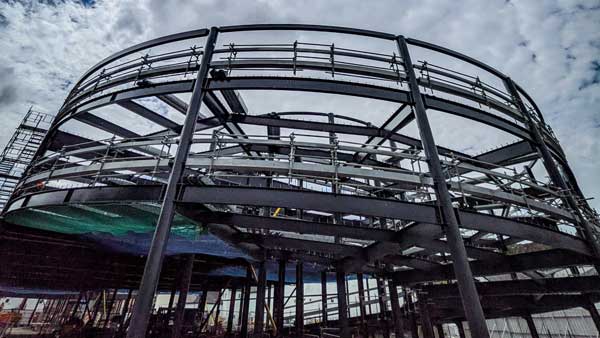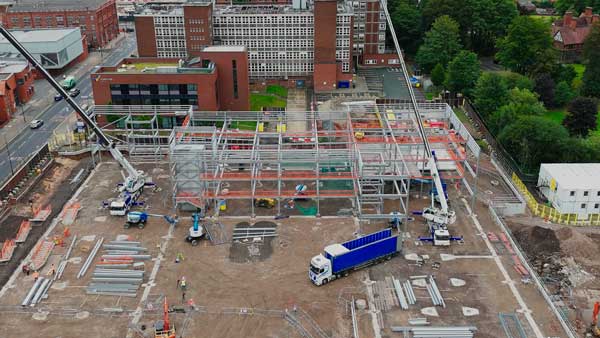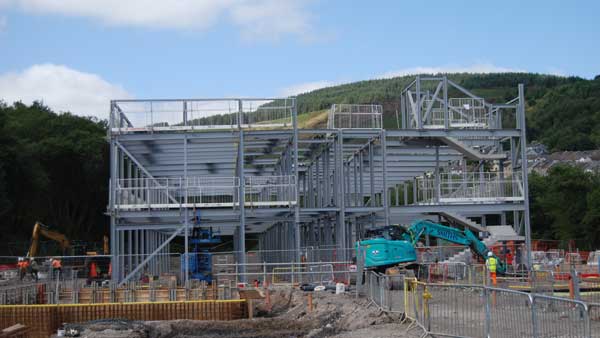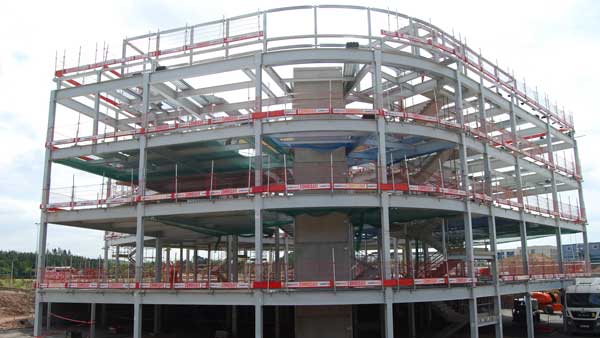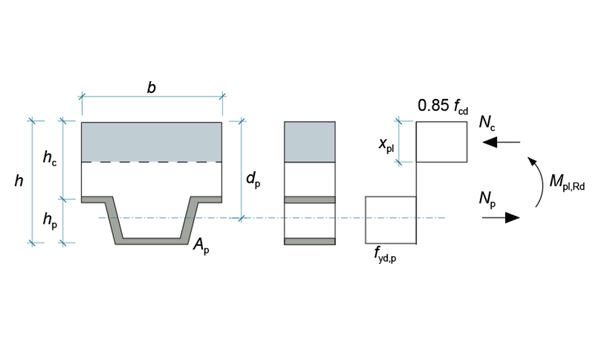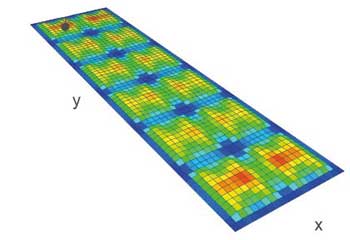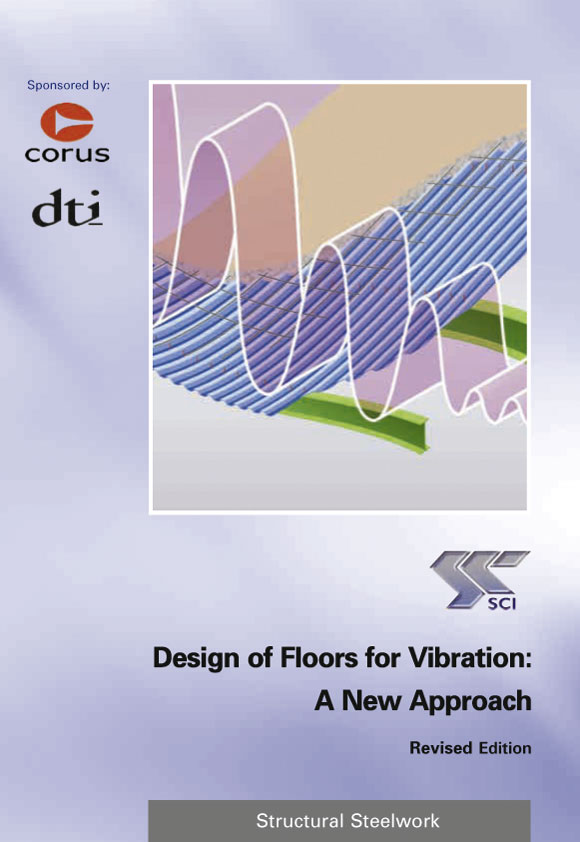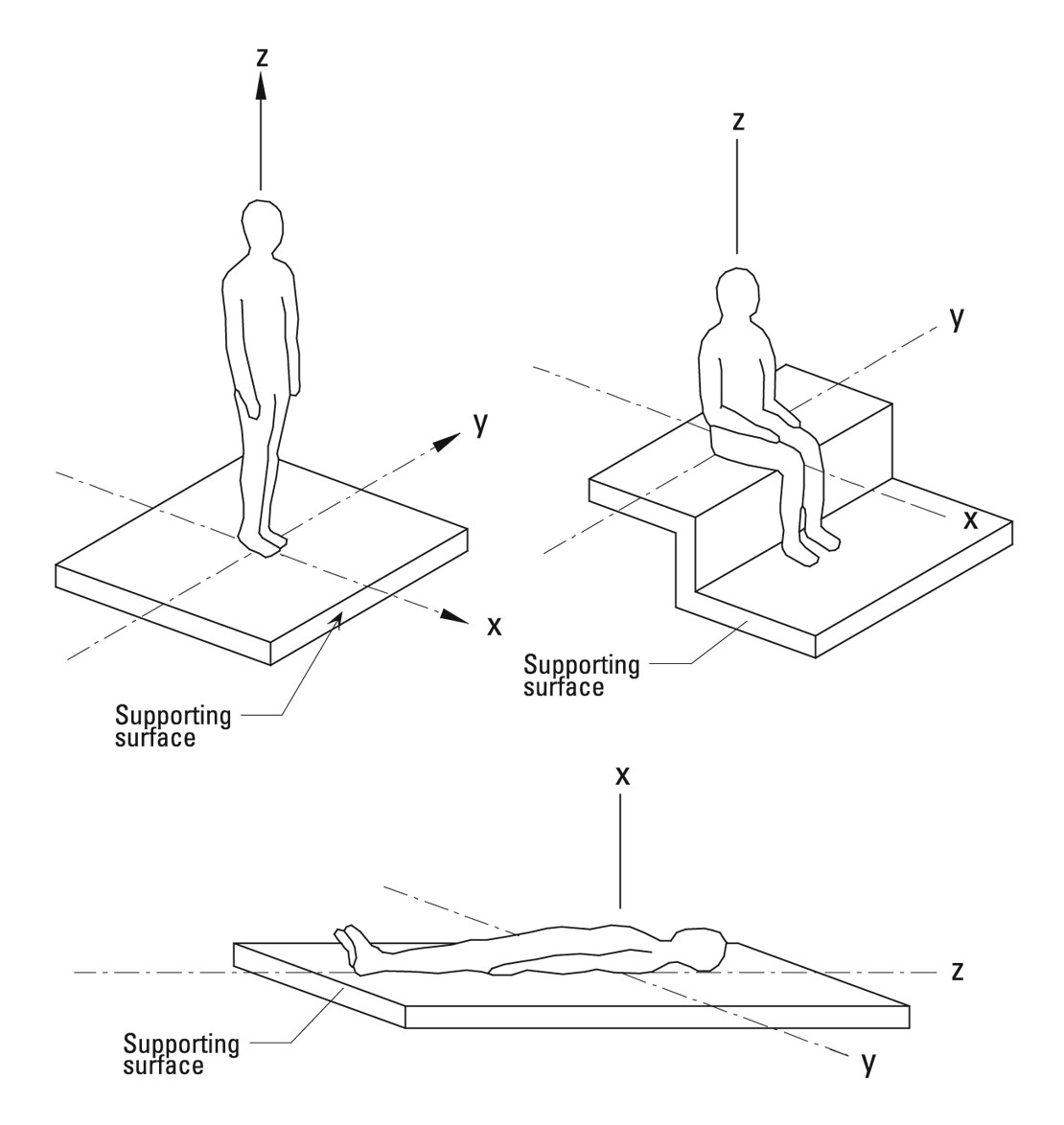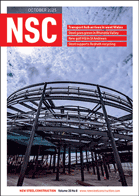Technical
AD 372: Vibration checks of floors
A number of methods are available to check the dynamic response of a floor. This advisory note discusses the appropriate application of the various approaches.
The assessment methods commonly used are:
• The traditional simple check of floor frequency
• A general method, involving finite element (FE) analysis of the floor
• A simplified response factor method, described in SCI P354 [1]
• American Institute of Steel Construction (AISC) Steel Design Guide 11 [2]
The traditional approach has been to ensure that the natural frequency of beams and slab exceeds 4 Hz. This check is based on the assumption that above this frequency, the floor is “tuned out” of the frequency range of the first harmonic component of the walking activity; resonance is avoided. The traditional approach is simple to apply but does not consider such effects as damping, the mass of the floor, or the possibility of resonance at higher harmonics.
Many modern standards have moved away from this traditional approach and require the designer to compare the floor response with criteria that reflect human perception in different environments, such as in offices, residential accommodation or hospitals. Reference is usually made to BS 6472-1 [3] or ISO 10137 [4], which specify acceptable levels of vibrations in buildings. To calculate the floor response, designers commonly use SCI publication P354 or AISC Steel Design Guide 11.
SCI P354 provides two design methods: a general method and a simplified method. The general method may be used for any floor type and any type of human activity; the method is based on FE modelling and response analysis. FE analysis is accurate and reliable, but is generally usually only used by specialists.
The simplified method is suitable for hand calculations, but is limited to steel-concrete composite floors subject to walking activities. The simplified method is based on a large number of FE models analysed using the general method and was calibrated to be conservative in all design situations.
The simplified method described in P354 has become popular with both designers and clients, and is often specified as the approach to be followed. However, the method does have limitations, and some designers have found the simplified method to be unduly conservative at shorts spans.
With short spans, an alternative method, such as that recommended by AISC, may suggest a less conservative design would still perform acceptably. The two methods have been compared with the conclusion that both the method in P354 and the AISC design guide produce satisfactory predictions of the fundamental frequency for steel-composite floor systems; both may be used with confidence. [5]
The P354 Simplified Method need not be specified as the de facto approach to be followed, as other authoritative methods are available, and, in some circumstances, may demonstrate that a less conservative solution is adequate.
[1] SCI P354, Design of Floors for Vibration: A New Approach (Revised Edition, February 2009) by A L Smith, S J Hicks and P J Devine
[2] AISC Steel Design Guide 11, Floor Vibrations due to human activity (1st Printing June 1, 2009) by Thomas M Murray, David E Allen and Eric E Ungar
[3] BS 6472-1 Guide to evaluation of human exposure to vibration in buildings. Vibration sources other than blasting, BSI, 2008
[4] ISO 10137, Bases for design of structures – Serviceability of buildings against vibration, International Organisation for Standardization, 2007
[5] Stephen Hicks, Progress in Structural Engineering and Materials Journal, Vol 6, No 1 January-March 2004
Contact: Siamak Bake
Tel: 01344 636525
Email: advisory@steel-sci.com

